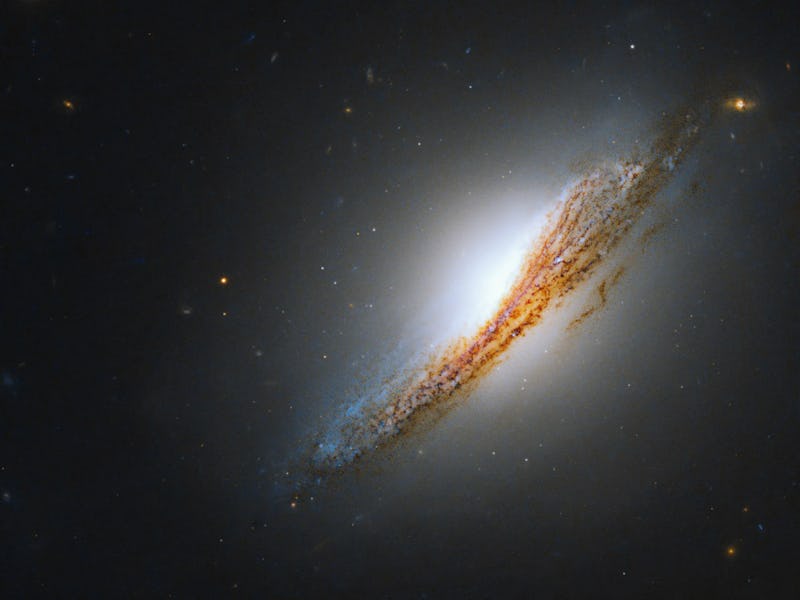The Hubble Telescope Just Captured An Extremely Rare Radio Galaxy
This beautiful object is one of only five such galaxies in the entire universe.

NASA published a snapshot this week of a strange and beautiful galaxy. It’s so weird that NASA officials say it’s one of only five such galaxies known to exist in the universe.
Astronomers give galaxies a variety of labels. Often, they describe them according to their shape. Take galaxy NGC 612, as seen above, which was most recently highlighted by the scientists running the Hubble Space Telescope. As you might see, it lacks the dramatic swirl of a spiral galaxy and doesn’t quite fit the mold of a halo-like elliptical galaxy. It’s somewhere in between. NGC 612 is a lenticular shape, and like the yummy lentils we eat during cold months that also embody that shape, the galaxy looks like a disk with a round bulge in the center.
But, even stranger attributes have appeared in front of scientific instruments when they’ve gazed towards NGC 612, perched in the Sculptor constellation roughly 400 million light-years from Earth.
Lenticular, radio galaxy NGC 612 is seen edge-on by the Hubble Space Telescope.
What’s in a name?
NGC 612 wears many hats.
Lenticular galaxies are strange — and NGC 612 may be amongst the strangest of the bunch. Its stars are only about 40 to 100 million years old, which is very young as far as lenticular galaxies are concerned. Stellar populations inside lenticular galaxies stars are usually older, and there is “little ongoing star formation,” according to NASA.
NGC 612 is also categorically “active.” As NASA explains, the vivid bulge at the heart of NGC 612 and other active galaxies appears “more than 100 times brighter than the combined light of its stars.”
Astronomers also call NGC 612 a Type II Seyfert galaxy. NGC 612’s Type II alias is due to the calm pace at which dust and gas move around the galaxy’s core. The Seyfert title is given when an active galaxy emits a grand amount of infrared light, despite looking normal in visible light. Infrared light can contain thermal data, and it is the wavelength of choice for the science instruments onboard NASA’s James Webb Space Telescope.
A rare radio galaxy
In addition to all this, NASA calls NGC 612 “an extremely rare example” of a non-elliptically-shaped radio galaxy.
NGC 612 is an odd source of radio waves. “Astronomers have only discovered five such radio-emitting lenticular galaxies in the universe,” NASA officials write in an image caption published Monday.
Hubble’s observations might help explain the emissions. “By imaging this galaxy, astronomers hope to uncover more about what causes galaxies to emit radio waves,” NASA officials write.
One possible explanation is that the radio emissions are left over from a past interaction NGC 612 had with a spiral galaxy. Lenticular galaxies are thought to get their shape from mergers of spiral galaxies, according to NASA.
The team behind Hubble published the image as the first in NASA’s Galaxy Week series. You can check out a new galaxy snapshot from the iconic space telescope each day all this week, through October 7.
This article was originally published on